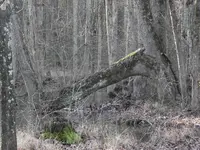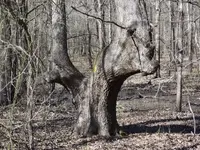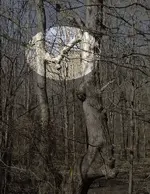- #121
Thread Owner
Question. Does a shadow sign still look kinda like what it's supposed to when the sun ain't right above it. And has any one heard of shadow signs made for different times of the day.
Question. Does a shadow sign still look kinda like what it's supposed to when the sun ain't right above it. And has any one heard of shadow signs made for different times of the day.
Why would some use a shadow sign in the wilderness. Back in the day this area was not very inhabited by white people. If you did want to hide some it would be fairly easier task. They could've just left it under a over hang and it would have more than likely still been there years later.
Don't know how the trees work but have found a bunch of them. I need to go back and get pictures of the and mark where they are on a map.



I know where there are lots of trees that look like they've been shaped or cut to grow in different than normal way. The frost gets here I'll get a lot of pictures of trees to post for y'all to look at and see what y'all make of them.
